What is Zigbee?
Zigbee is a wireless technology that supports automation—it allows many home security and smart home devices to interconnect in a single system. It sounds complicated, but it works a lot like your home Wi-Fi network, just for smart devices.
Just like you need a wireless router to create a Wi-Fi network, you also need a hub to set up and control a Zigbee network. The hub coordinates the system, and each device also acts as a node to create a mesh network of devices.
What Are Mesh Networks and Nodes?
Wondering what’s in it for you? Because Zigbee devices have a different wireless connection, they won’t overcrowd your Wi-Fi network. And having a Zigbee network means you have more alternatives to Wi-Fi smart devices.
You’re probably familiar with Zigbee devices without even knowing it. Philips Hue is one of the most popular smartbulbs, and it’s also a Zigbee device.
To help you decide if Zigbee devices are right for your smart home, let’s dive into four categories of Zigbee devices and their roles.
Zigbee Devices to Look for
Zigbee Smart Home Hubs
Hubs help control smart devices across your home by giving you a single app, which eliminates the need for multiple apps on your smartphone. There are four types of smart hubs that use the Zigbee protocol:
- Dedicated hubs automate and control devices from as many brands as possible but don’t have any additional features.
- Multipurpose hubs automate and control devices while also serving another function, like that of a smart speaker.
- Security systems (or base stations) primarily focus on arming and disarming burglar alarms.
- Bridges help a single brand’s products (or a single type of product like a smart light) connect to the internet and mobile devices.
Let’s take a closer look at some examples of these hub types.
Dedicated Smart Hubs: Samsung SmartThings
Dedicated smart hubs are unbeatable in terms of compatibility. They can unify a smart home more effectively than other hubs and have more granular programming options. Still, don’t invest in a dedicated smart hub unless there’s no other way to control a device that you want in your smart home. This helps you save cash while streamlining your smart home with fewer devices.
Like most dedicated smart hubs, Samsung SmartThings only wants to control smart home products. It helps translate different wireless frequencies and programming languages into something that you can control with the SmartThings app.
Dedicated hubs are an endangered species now, but there was a time before Wi-Fi smart devices when they were an integral part of the smart home. Wi-Fi takes advantage of the router you already have in your home to virtually eliminate the need for a dedicated smart home hub.
The Zigbee protocol may have some advantages over Wi-Fi, but buying an extra piece of hardware (a hub) isn’t a budget-friendly option. It’s one of the reasons that smart home tech isn’t mainstream in every home.
Multipurpose Smart Hubs: Amazon Echo Plus
Multipurpose hubs combine two or more products so you can use them for more things—not just home automation. They help you ease into the smart home lifestyle because you can add devices as your budget and needs allow. We think they’re a great way to future-proof in case that perfect smart device comes along later.
For example, the Amazon Echo Plus is a fully functional smart speaker that you can use to listen to your favorite tunes, set timers in the kitchen, or check the day’s weather. These tasks don’t require you to buy additional devices. This means you still get a lot of value from the smart speaker, even without extra smart home devices.
Still, the Echo Plus has a trick up its sleeve with the ability to control Zigbee devices as well as smart devices that use Wi-Fi. This added functionality pairs well with the speaker’s built-in Amazon Alexa voice controls.
Check out our guide to Amazon Alexa to learn more about Echo smart speakers.
Security Systems: Ring Alarm
You guessed right: security system controllers specialize in security. So they don’t often have the same compatibility as other smart home hubs. Instead, they give you access to professional monitoring that looks after your home 24/7. This security-first design offers an excellent option for protecting your home.
While many professional systems use Zigbee devices, you get the biggest bang for your buck with a DIY security system like Ring Alarm. You don’t need to pay for a subscription unless you want monitoring. You can add compatible Zigbee devices so you can control lights with the Ring app or monitor your home by yourself.
Ring Alarm’s compatibility limitations help keep the system simple for folks that place the highest priority on security. But also add a bit of flexibility to make your home more convenient.
Bridges: Philips Hue
Bridges have the most limited functionality of all Zigbee smart hubs. Some bridges work only with smart home devices from a single brand, while others can control similar Zigbee devices from other companies. The most common use of bridges is to provide a complete product that doesn’t require customers to buy a separate smart hub.
The best example of Zigbee bridges in action is Philips Hue. The company wants people to use its smartbulbs right out of the box. So Hue starter kits (great gifts for newbies) come with a bridge that connects to your router to give Hue lights their Wi-Fi and mobile app capabilities.
The bridge also creates a dedicated network just for smart lights, making it easier to add more lights in the future. Since Hue’s bridge works with the Zigbee-based Hue bulbs, it’s also compatible with Zigbee bulbs from other brands.
Bridges are entirely optional if you already have a compatible smart hub. But they don’t require the same level of commitment to a dedicated hub with more features than you’ll ever use.
Pro Tip
Zigbee Lighting
Smart Light Bulbs
Most smart lights on the market use Zigbee, making them one of the best reasons to get a hub. Smartbulbs are easy to install because you screw them directly into a light fixture or lamp. They’re also one of the cheapest ways to start building a smart home—costing around $10 per bulb (often less expensive in multi-packs) for basic units and up to $40 for color-changing bulbs.
Because these are simple devices, you can expect three basic features when connecting them to a hub:
- Remote control
- Dimming
- Scheduling and automation
Pro Tip
Here are five brands of Zigbee smartbulbs worth checking out. While we list multi-packs and starter kits, there are many more options from each brand, including other colors and options to buy a single bulb. Mostly, we want to give you some ideas for how to add Zigbee lighting to your home.
| List Price |
| Package Contents |
| Color |
| Brightness |
| Includes Bridge or Hub |
| Philips Hue White and Color Ambiance Starter Kit | Sengled Smart Light Bulb Starter Kit | Cree Connected Soft White | Sylvania Smart+ Full Color | Innr Smart Bulb White |
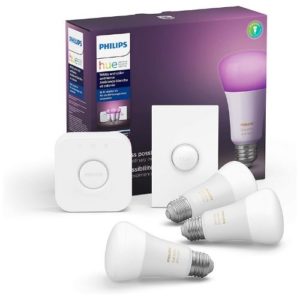 |
 |
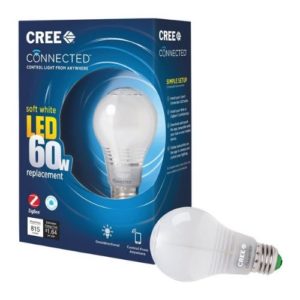 |
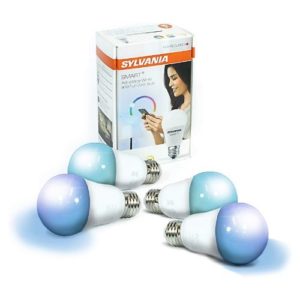 |
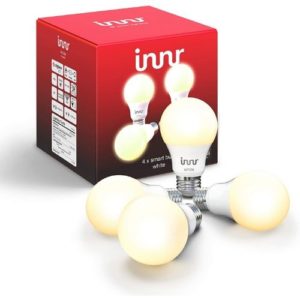 |
| $174.00 (3-pack) | $87.06 (8-pack) | $59.98 (6-pack) | $37.99 (4-pack) | $35.99 (4-pack) |
| 3 Bulbs Hue Hub Smart Button |
8 Bulbs Sengled Hub |
6 Bulbs | 4 Bulbs | 4 Bulbs |
| Color-changing | White | White | Color-changing | White |
| 800 lumens | 800 lumens | 815 lumens | 805 lumens | 806 lumens |
| Yes ✓ |
Yes ✓ |
No X |
No X |
No X |
| View on Amazon | View on Amazon | View on Amazon | View on Amazon | View on Amazon |
*Amazon.com list price as of 05/13/2020 at 3:47 p.m. (MT). Read full disclaimer.
Learn more about smart lights in our list of the best smart light bulbs.
Smart Light Switches
There are surprisingly few smart light switches that use Zigbee, but we found four options (in no particular order) worth checking out:
1. Philips Hue Smart Dimmer Switch
The Philips Hue Smart Dimmer Switch (about $25) is a battery-powered switch that comes with a mounting plate so you can put it on your wall. The switch attaches the mounting plate with a magnet so you can remove it to use as a remote.
It requires a Philips Hue Hub and doesn’t work with other Zigbee hubs, so it lacks compatibility as a general-purpose solution.
2. AduroSmart ERIA Smart Wireless Dimmer
The AduroSmart ERIA Smart Wireless Dimmer (about $20) can directly link this switch to Zigbee light bulbs (up to 20). Like the Hue switch above, it also uses a magnetic wall mount and doubles as a portable remote.
This switch doesn’t require a hub, but you can link it to hubs from AduroSmart or Samsung SmartThings for added functionality.
3. GE Zigbee Smart Dimmer In-Wall Lighting Control
The GE Zigbee Smart Dimmer In-Wall Lighting Control (about $55) is a great option because it replaces your light switch instead of your light bulbs. While it’s not compatible with Zigbee bulbs, it works well with traditional dimmable light bulbs.
It can offer a cost-effective way to switch a whole room to Zigbee, especially if you have a lot of bulbs. It requires a Zigbee smart hub and light electrical work to swap out your old switch.
4. Lutron Aurora
The Lutron Aurora (about $40) is a battery-powered dimmer knob that attaches to existing light switches to control up to 12 Philips Hue light bulbs. It doesn’t require a hub, but the only smartbulbs it officially supports are Hue products (though it technically works with other Zigbee bulbs). It can control up to 50 bulbs and control custom lighting scenes if you connect it to a Hue Hub.
What we like most is the Aurora’s distinctive design, which prevents people from flipping off switches connected to Zigbee bulbs. Smartbulbs lose all of their usefulness if the light switch is off.
Smart Plugs
Smart plugs work well for controlling lights and appliances like fans. They’re good for rounding out your smart home. Here are some Zigbee smart plugs worth considering:
- Innr Zigbee Smart Plug (2-pack) (about $35)
- Sengled Smart Plug (about $20)
- Sylvania Smart+ ZigBee Indoor Smart Plug (about $25)
- Philips Hue Smart Plug (about $40)—exclusive to Philips Hue
Check out our review of the best smart plugs for advice on choosing the right smart plug.
Zigbee Security Sensors
Your Zigbee smart home can double as a home security system if you have the right sensors. Most DIY Zigbee hubs don’t support professional monitoring, so you have to monitor your home yourself. Here are two types of Zigbee sensors to help boost your home security.
Motion Detectors
Motion sensors watch for movement inside your home and are one of the most critical parts of a security system because they help spot intruders that come in through broken or open windows. Motion sensor features are simple, so we’ll skip to the good part and list a few reputable models to consider for your Zigbee system.
- Ecolink PET Immune Motion Detector (about $40)
- Philips Hue Indoor Motion Sensor (about $40)—exclusive to Philips Hue
- Samsung SmartThings Magnetic Motion Sensor (about $25)
Learn more about how motion detectors work in our beginner’s guide to motion sensors.
Door and Window Sensors
These two-part sensors involve a magnet and a sensor that separate whenever someone opens a door or window. This sends a signal to the hub or security system to set off an alarm or send you a notification.
- Sengled Smart Window and Door Sensor (2-pack) (about $28)
- Samsung SmartThings Door and Window Multipurpose Sensor (about $20)
- Visonic Wireless Door Window and Temperature Sensor (about $20)
Read our door and window sensor review to learn more about how these sensors work.
Other Security Sensors
Just as smart lighting manufacturers tend to prefer Zigbee for smartbulbs, security sensor manufacturers prefer Z-Wave technology. Z-Wave is a similar smart home platform and also Zigbee’s main rival. This lack of selection makes it trickier to find Zigbee glass break sensors, sirens, flood sensors, thermostats, and smoke detectors, especially from established brands.
Considering most dedicated smart hubs support both Z-Wave and Zigbee, we think it’s a lot easier to go with Z-Wave in this instance. Another alternative is getting sensors that use Wi-Fi, particularly if you have an Amazon Echo Plus, which doesn’t have Z-Wave support.
You can learn more about security sensors by reading our article on what to look for in a home security system.
Zigbee Smart Locks
All three of the largest smart lock manufacturers—Kwikset, Schlage, and Yale—sell locks that have a built-in Zigbee radio. Here are our favorite Zigbee locks from each brand:
- The Kwikset SmartCode 914 (about $150) has a keypad with physical buttons, which makes it a cheaper option for the budget-conscious.
- The Yale Assure Lock SL with Zigbee (about $210) is entirely keyless with a sleek touchscreen. It’s one of the most attractive smart locks on the market.
- The Schlage Connect Smart Deadbolt (about $200) has a higher security rating than similar locks from Kwikset and Yale, so it’s a great option for boosting your security.
While these three Zigbee locks stand out, there are a variety of models from each brand to get the style and color you want. To learn more about what makes a good smart lock, check out our review of the best smart locks.
Zigbee Devices FAQ
How do I connect Zigbee devices?
Make sure you have a Zigbee Certified hub first. While the exact instructions vary based on the brand, you’ll follow some basic steps:
- Using the hub’s app, select the option to add a device. You may need to select a device type. The hub will go into pairing mode.
- Turn on the device by inserting batteries, plugging it in, or flipping a power switch.
- Most devices automatically jump into pairing mode when they get power, but you may need to press a button on some units.
- The hub and device finish the process automatically. You should get a prompt that lets you name your device and assign it to a room.
Is Zigbee better than Wi-Fi?
It depends on the situation:
- Zigbee uses less energy to transmit and receive signals, making it ideal for battery-powered devices like sensors and smart locks.
- Zigbee uses a different frequency that doesn’t compete with other devices on your Wi-Fi network, so it’s less likely to affect your internet connection.
- Zigbee doesn’t require an internet connection or router to communicate between devices.
- Wi-Fi is better for sending large amounts of information—particularly on smart speakers and security cameras.
- Wi-Fi allows for the use of mobile apps since smartphones don’t have Zigbee technology.
The majority of Zigbee smart hubs have a Wi-Fi connection that enables mobile app controls and opens the door for interconnectivity with Wi-Fi smart devices.
What is the range of Zigbee?
The wireless frequencies of a Zigbee mesh network have a maximum range of 250–325 feet indoors.1 Without obstructions, Zigbee frequencies can reach over 980 feet. You can boost the range and strength of the signal by using a signal repeater.
How many devices can Zigbee support?
Up to 65,000 per network,2 meaning there’s no practical limit to the number of Zigbee devices in a smart home network. Most smart home networks won’t need more than a few dozen devices, and even the largest homes probably won’t have more than 1,000 devices.
Is Zigbee secure?
Yes, all Zigbee devices use built-in encryption to protect against hacking. The Zigbee Alliance—an organization that sets the standards for Zigbee tech—uses a certification program to ensure that manufacturers meet these security standards. Still, no technology is completely secure from attacks.
Zigbee devices should say “certified product” somewhere on the box or in the product description. You can also search a database of certified products on the Zigbee Alliance website.
Why is Zigbee so expensive?
Companies need to pay the Zigbee Alliance for licensing to make Zigbee-certified devices. They pass the costs of this licensing along to consumers.
Disclaimers
*Amazon.com list price as of 05/13/2020 at 3:47 p.m. (MT). Product prices and availability are accurate as of the date/time indicated and are subject to change. Any price and availability information displayed on Amazon at the time of purchase will apply to the purchase of this product. Safewise.com utilizes paid Amazon links.
Certain content that appears on this site comes from Amazon. This content is provided “as is” and is subject to change or removal at any time.
†Nest Hello, Google, Google Assistant, and other related marks are trademarks of Google LLC.
The post Outfitting Your Smart Home: Zigbee Devices appeared first on SafeWise.
Article source here: Outfitting Your Smart Home: Zigbee Devices


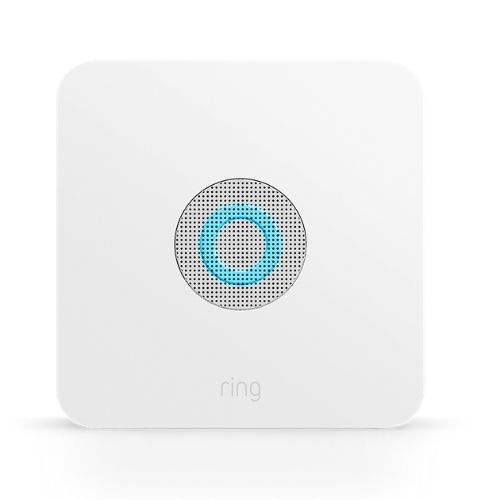
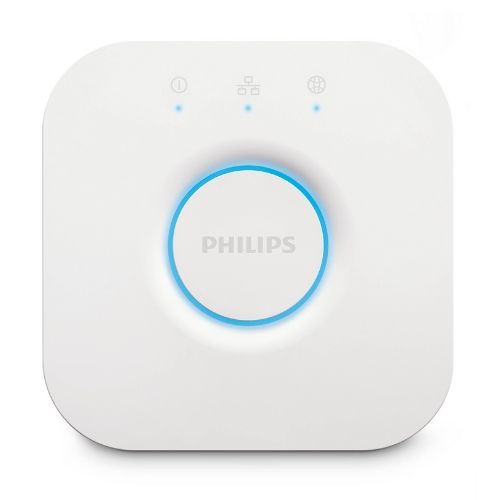
No comments:
Post a Comment